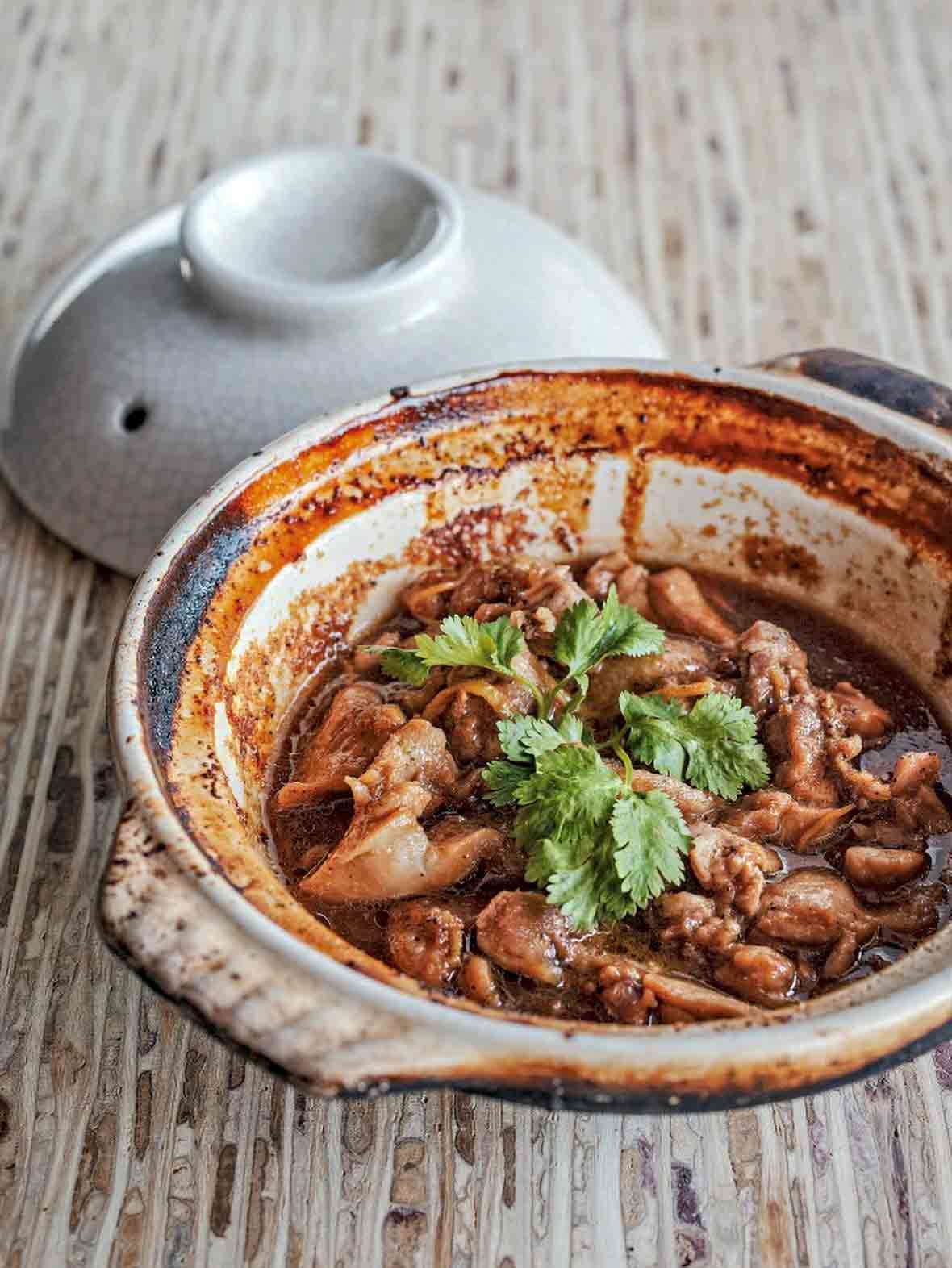
4.7 from 78 votes
Vietnamese Caramel Chicken
Vietnamese caramel chicken, known as ga kho, is easy to make at home with fish sauce, palm sugar, chicken, ginger, and black pepper. The recipe is authentic as it gets and comes from The Slanted Door restaurant in San Francisco.
Prep Time
25 mins
Cook Time
25 mins
Total Time
1 hr
Servings: 2 servings
Calories: 503 kcal
Course:
Main Course
Cuisine:
Vietnamese
Ingredients
For the Vietnamese caramel sauce
- 1 pound Asian palm sugar* coarsely chopped
- 1 1/4 cups fish sauce (we prefer Three Crabs brand but any fish sauce in a glass, as opposed to plastic, bottle is preferable)
For the Vietnamese caramel chicken
- 12 ounces boneless, skinless chicken thighs (about 4), trimmed
- 2 tablespoons mild olive oil or vegetable oil
- 1-inch piece fresh ginger peeled and julienned
- 2 medium shallots thinly sliced lengthwise into rings
- 1 to 2 Thai or serrano chile peppers halved lengthwise and seeded, if desired
- cilantro leaves and stems chopped, for garnish
- freshly ground black pepper
- Steamed jasmine rice for serving
Instructions
Make the Vietnamese caramel sauce
- Dump the palm sugar in a small saucepan over medium-low heat and wait until the sugar sorta melts, which can take anywhere from 5 to 25 minutes. (If substituting light brown sugar for the palm sugar, you'll need to add a tablespoon or two cold water to the sugar before you place it over the heat and stir almost constantly as it melts.) Palm sugar is still a touch grainy even when it melts and that's okay. It may smoke ever so slightly, and that's okay. If the sugar appears to seize or scorch, though, lower the heat and go ahead and stir it.
- Meanwhile, measure your fish sauce and have it at the ready.
- When the sugar melts, turn off the heat under the sugar and slowly and carefully stir in the fish sauce, taking care as it may bubble and spatter. If the sugar seizes into clumps, simply return the pan to low heat and stir until everything melts once again. Let cool. The caramel sauce will thicken as it cools. Store in an airtight container for up to 1 month.
Cup of Yum
Make the Vietnamese caramel chicken
- Cut the chicken thighs into bite-size pieces.
- In a 10-inch claypot or sauté pan over medium heat, heat the oil. Add the ginger and shallots and sauté until softened, about 2 minutes. Increase the heat to medium-high and add the chiles, chicken, and 1/4 cup caramel sauce. Bring to a boil, then turn the heat down and simmer, uncovered, stirring or turning the chicken occasionally, until the chicken is cooked through and the sauce is bubbling, a shade darker, and thicker and stickier, 10 to 20 minutes. Garnish with cilantro and gobs of black pepper. Serve immediately with steamed rice.
Notes
- The kind of palm sugar that you want—and need—for this claypot chicken recipe typically comes in a hard disk of palm sugar shrink-wrapped in plastic or tightly packed in a clear plastic jar. The palm sugar looks sorta like sand after the tide has gone out and left it drenched and packed down. It is sometimes labeled coconut sugar. You can also use Indian jaggery. Do not substitute granulated organic coconut palm sugar found at health food stores or your attempt at melting it will be a spectacularly epic fail resulting in the possible destruction of your saucepan. Trust us. Asian palm sugar has a higher moisture content which enables it to behave more collegially as it melts than the health food stuff.
Nutrition Information
Serving
1portion
Calories
503kcal
(25%)
Carbohydrates
42g
(14%)
Protein
37g
(74%)
Fat
21g
(32%)
Saturated Fat
4g
(20%)
Monounsaturated Fat
13g
Trans Fat
1g
Cholesterol
162mg
(54%)
Sodium
5886mg
(245%)
Fiber
1g
(4%)
Sugar
31g
(62%)
Nutrition Facts
Serving: 2servings
Amount Per Serving
Calories 503
% Daily Value*
| Serving | 1portion | |
| Calories | 503kcal | 25% |
| Carbohydrates | 42g | 14% |
| Protein | 37g | 74% |
| Fat | 21g | 32% |
| Saturated Fat | 4g | 20% |
| Monounsaturated Fat | 13g | 65% |
| Trans Fat | 1g | 50% |
| Cholesterol | 162mg | 54% |
| Sodium | 5886mg | 245% |
| Fiber | 1g | 4% |
| Sugar | 31g | 62% |
* Percent Daily Values are based on a 2,000 calorie diet.